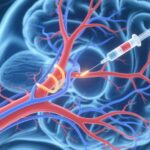Highlights
- Dual inhibition of IL-17A and IL-17F impedes neutrophil chemotaxis, diminishing antifungal immunity.
- In vitro data reveal increased survival of Candida in the presence of dual IL-17A/F blockade.
- These findings help explain the higher rates of mucosal and systemic candidiasis in patients receiving bimekizumab.
- Clinical vigilance and infection monitoring are warranted when prescribing dual IL-17A/F blockers, despite their efficacy in psoriatic arthritis.
Clinical Background and Disease Burden
Psoriasis and psoriatic arthritis (PsA) are chronic inflammatory diseases characterized by systemic immune dysregulation and substantial morbidity. Recent therapeutic advances target key cytokines, notably interleukin-17A (IL-17A) and IL-17F, both central to the pathogenesis of these conditions. Bimekizumab, a monoclonal antibody that neutralizes both IL-17A and IL-17F, has demonstrated superior efficacy in reducing disease activity compared to agents that target a single cytokine. However, post-marketing surveillance and clinical trials have reported increased rates of mucosal and, less commonly, systemic candidiasis in patients treated with bimekizumab, raising concerns about infection risk versus therapeutic benefit.
Research Methodology
This translational study sought to elucidate the mechanistic basis for increased candidiasis risk in patients receiving dual IL-17A/F blockade. Blood samples were obtained from ten patients with psoriatic arthritis. Neutrophils were isolated by centrifugation and subjected to chemotaxis assays to assess their migration in response to varying combinations of recombinant IL-17A, IL-17F, and their respective monoclonal antibodies. The functional consequence of these interactions was further explored by co-incubating neutrophils with Candida cells under each condition. Neutrophil migration was quantified via optical density measurements, and Candida survival was assessed to determine the efficacy of neutrophil-mediated fungal clearance.
Key Findings
The study demonstrated that both IL-17A and IL-17F individually enhance neutrophil chemotaxis, and this effect is synergistic when both cytokines are present. When either IL-17A or IL-17F was neutralized by its respective monoclonal antibody, neutrophil migration was significantly reduced compared to cytokine alone. The impairment was most pronounced when both cytokines were simultaneously neutralized. Functionally, the presence of IL-17A and IL-17F improved neutrophil-mediated killing of Candida, while dual blockade resulted in increased Candida survival. These mechanistic findings are consistent with clinical observations of higher candidiasis rates in patients treated with bimekizumab.
Mechanistic Insights and Biological Plausibility
IL-17A and IL-17F are key drivers of mucosal immunity, particularly through their role in recruiting neutrophils to sites of microbial invasion. Neutrophils are the frontline of host defense against fungal pathogens such as Candida. The present study provides direct evidence that dual blockade of IL-17A and IL-17F impairs neutrophil chemotaxis, thereby compromising the host’s ability to clear fungal infections. This mechanistic link reinforces findings from genetic studies in humans with inborn errors of IL-17 immunity, who also exhibit increased susceptibility to mucocutaneous candidiasis.
Expert Commentary
Dr. Disha Chakraborty, who presented these results at the GRAPPA 2025 Annual Meeting, noted, “We thought [increased candidiasis risk] might be because of the effect on neutrophil chemotaxis, and the results exactly translated to that. However, bimekizumab also has very good efficacy in PsA. So we need to balance efficacy with increased monitoring of patients.” This perspective emphasizes the clinical trade-off between potent immunomodulation and infection risk.
Controversies and Limitations
Despite its important mechanistic insights, the study’s limitations warrant consideration. The sample size was small (n=10), limiting generalizability. The in vitro nature of the experiments may not capture the full spectrum of host-pathogen interactions or the clinical manifestations of candidiasis in real-world settings. Additionally, patient-specific factors such as comorbidities, mucosal integrity, and concomitant immunosuppression were not addressed. Thus, while the findings are compelling, further studies in larger and more diverse patient populations are needed to translate these results into clinical practice recommendations.
Conclusion
This translational study sheds light on the biological rationale for increased candidiasis risk with dual IL-17A and IL-17F blockade, as seen with bimekizumab. The impairment of neutrophil chemotaxis underpins diminished mucosal antifungal defense, aligning with observed clinical outcomes. While bimekizumab remains a highly effective therapy for PsA and psoriasis, clinicians should remain vigilant for candidiasis, employing routine surveillance and patient education. Future research should focus on risk stratification and mitigation strategies to optimize outcomes for patients requiring dual IL-17 blockade.
References
1. Chakraborty D. Exploring the Synergistic Effects of IL-17A and IL-17F on Neutrophil Chemotaxis: Risk of Candidiasis with Dual Blockade of IL-17A and IL17-F, GRAPPA 2025.
2. Puel A, Cypowyj S, Bustamante J, et al. Chronic mucocutaneous candidiasis in humans with inborn errors of interleukin-17 immunity. Science. 2011;332(6025):65-68.
3. Reich K, Warren RB, Lebwohl M, et al. Bimekizumab versus secukinumab in plaque psoriasis. N Engl J Med. 2021;385(2):142-152.


